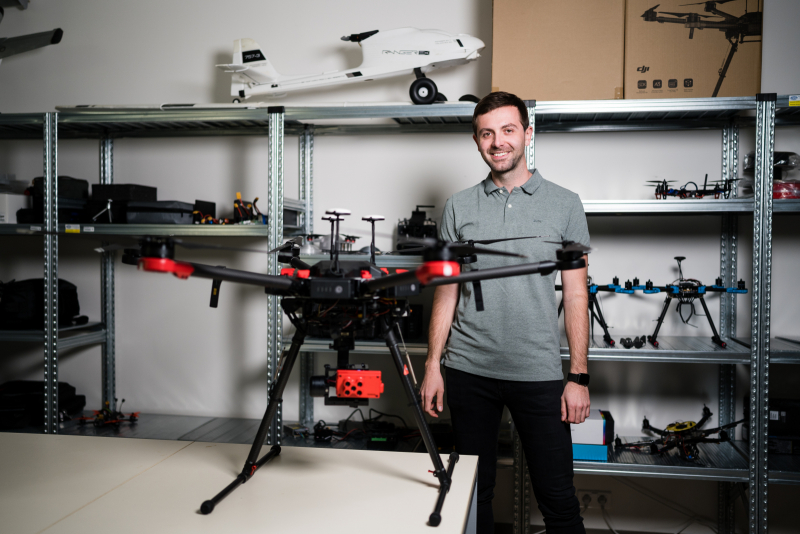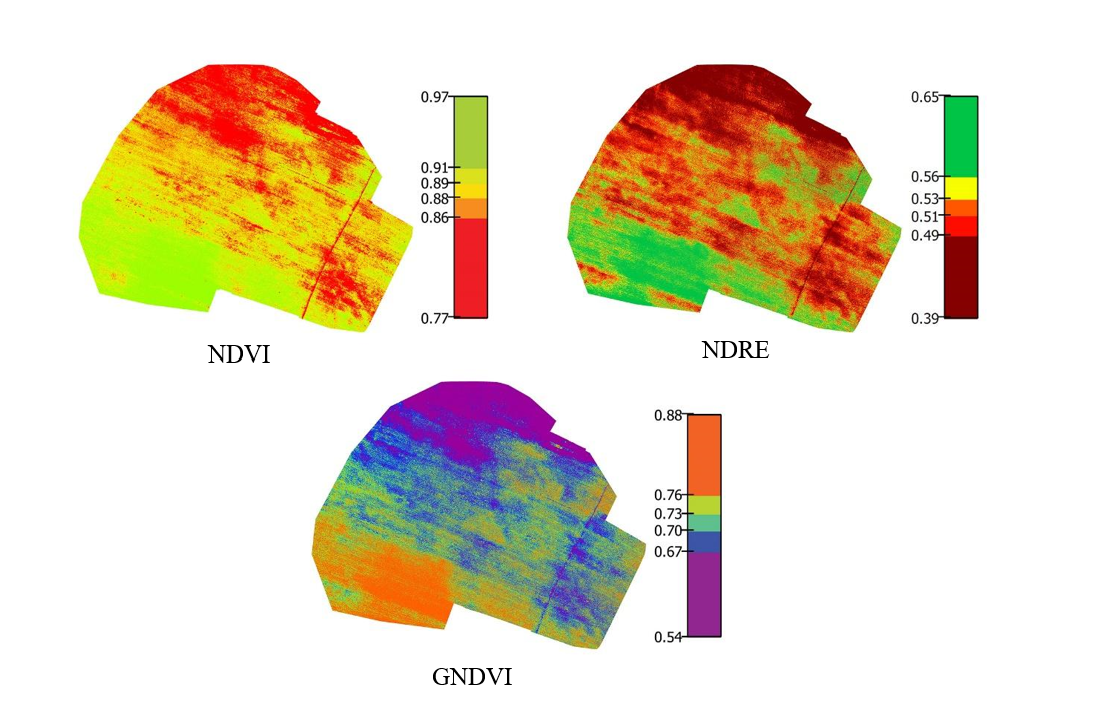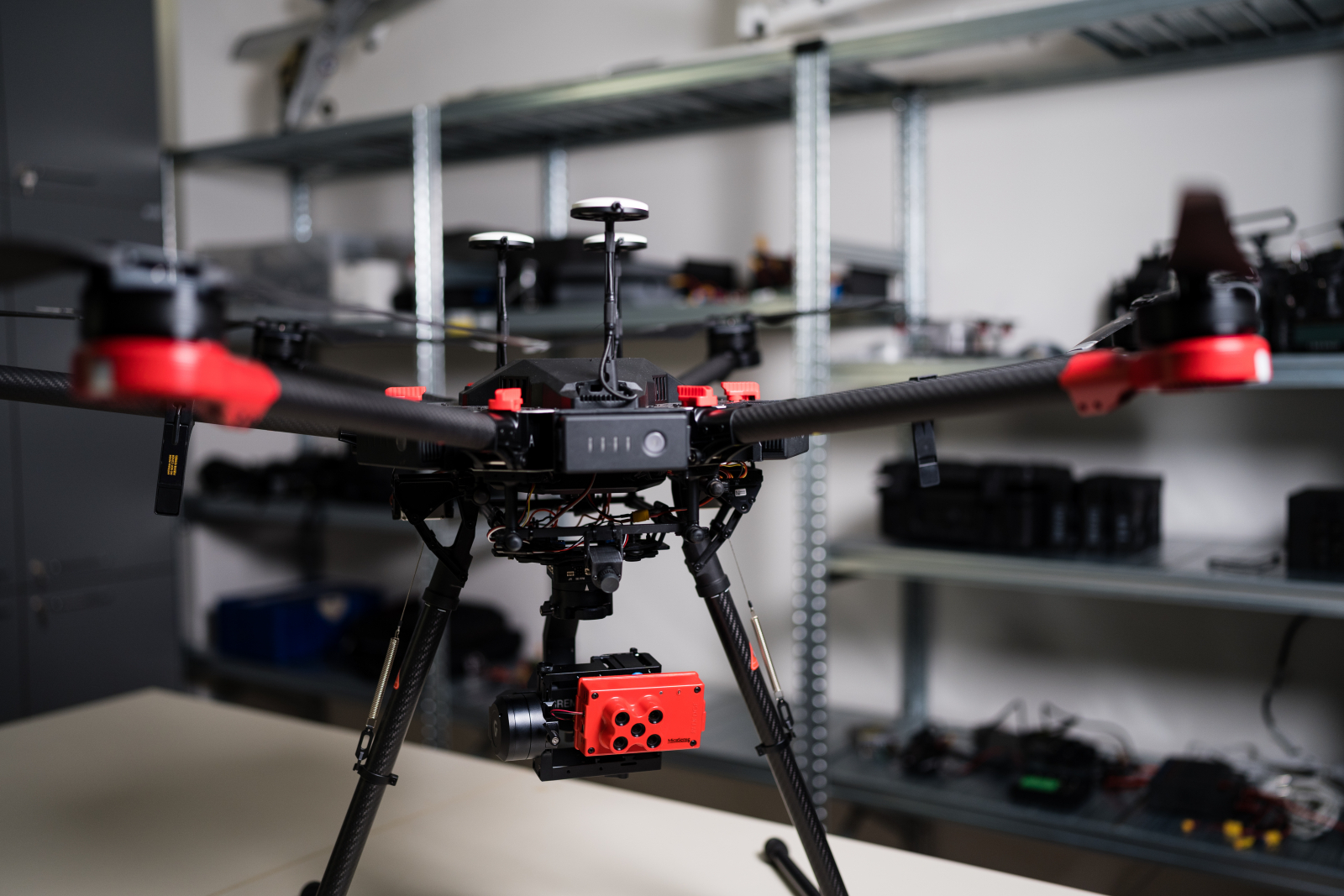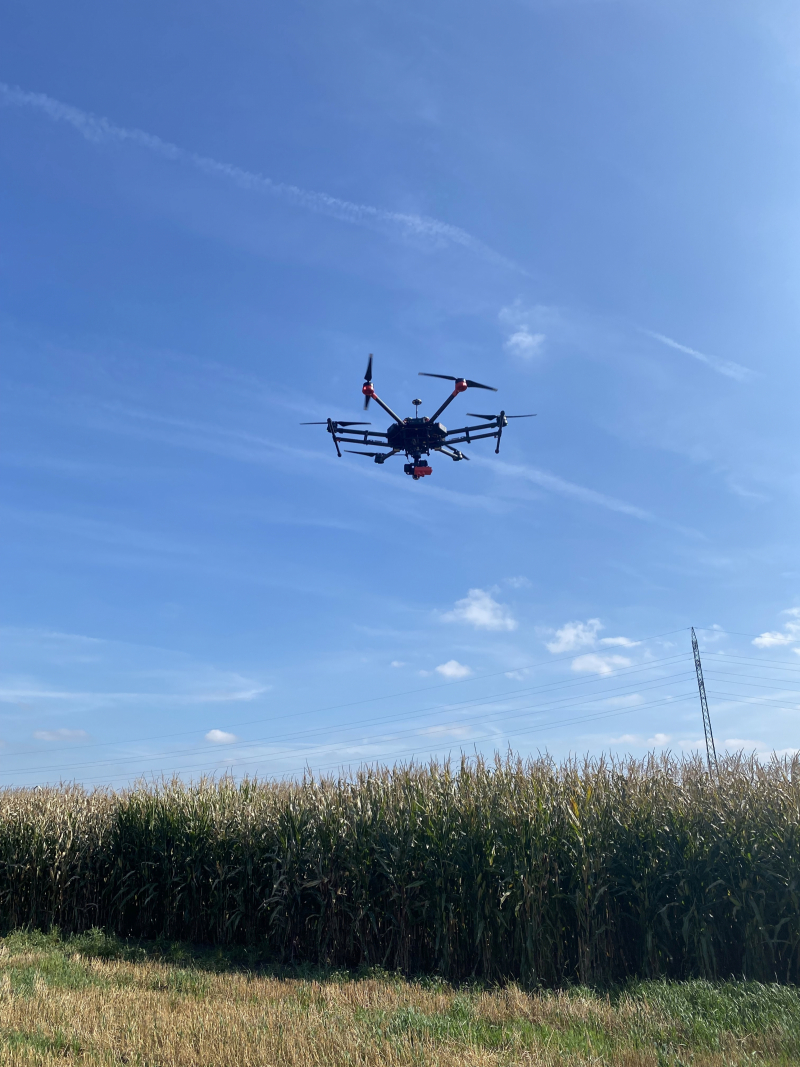Ideas and discoveries
Drones monitor the ideal time for harvesting maize

You can read on the Internet how to tell when maize is ripe, how its husks should be dry and the kernels soft. But for farmers who cultivate huge fields and sell their maize as animal feed, every day that goes by outside the ideal harvest is a loss of several hundred thousand crowns. Therefore, many of them prefer to entrust the harvest to professionals and modern technology. How to know the right time to harvest maize has been researched for the third year by electrical engineers from the BUT (Brno University of Technology).
A large drone flies over a green field overgrown with maize and takes pictures. When it is done, it flies to the ground and that is when the slightly less action-packed part of Jiří Janoušek’s research begins. At the FEEC (Faculty of Electrical Engineering and Communication) BUT, he examines photos taken by a multispectral camera and tries to read from them whether now is the best time to harvest maize or to wait a few more days.

After composing the camera photos, colour maps are created based on different vegetation indices. The project objective is to select the one that best captures the maturity of the maize. | Author: archive of Jiří Janoušek
“Each lens on the camera takes one picture in a narrow spectrum. To our eyes, such image looks like a simple black and white photograph, but when comparing them to each other, big differences can be seen. In the programme, I compose them into reflectance maps and calculate various vegetation indices,” says Jiří Janoušek, pointing to a colour record of the field. The different shades indicate, in a simplistic way, the health of the plant. The infrared camera can, for example, remotely detect from the leaves whether the plant is beginning to wilt.
LENGTHY ANALYSES AND CLOUDY SKIES
Currently, farmers rely on satellite images, but this has about ten times lower resolution than a drone and cannot be used if there is cloud cover over the area. The satellite also passes over the site roughly once every five days, and that can result into significant delays. Time is also an issue for chemical analyses, where samples are taken manually from the maize in the field.

“When they take samples, they have to wait for a week for the results estimate the harvest time. They thought of trying to find a method that would determine the exact time of the harvest, preferably on the same day, so that they would know if the time is right the very next day. They also considered a method where measurements would be taken a week in advance and they would know if the ideal harvest time will be in about a fortnight, or if it was already too late,” Janoušek points to the time pressure. For farmers, missing the ideal harvest season by even a few days can result in a huge loss.
At the Institute of Theoretical and Experimental Electrical Engineering at the FEEC BUT, doctoral student Janoušek has been trying for three years to test whether it is possible to determine the exact chemical composition of maize from images taken by a multispectral camera drone. Fortunately, it turns out that his assumption is valid.
HOW MANY LITRES OF MILK DOES A COW PRODUCE?
And what is essential for determining the ideal harvest time? “The dry matter content is the most important factor for maize. Farmers are able to convert it into milking capacity of cows, i.e. up to litres of milk,” explains Jiří Janoušek enthusiastically. “I will fly a drone over a field, find out its vegetation index, and the farmer will know that after feeding that particular maize, the cow will produce that much milk. For them, these are perfectly specific numbers.”

He tried the drone in the fields of large companies near Velké Bílovice, Letovice or Nový Jičín. In addition to various maize hybrids, he also focuses on another feed – alfalfa. In the future, he plans to use the imaging for the harvesting of cereals.
According to Jiří Janoušek, farmers do not have to worry about being financially ruined by drone imaging: “A week’s delay can cost farmers millions, so such a measurement is a negligible amount for them.”
(tk)
Antibiotic resistance in the poultry microbiome is investigated by FEEC BUT
Scientists from FEEC BUT have developed a bracelet that warns of the risk of Parkinson ’s disease
Spacetime navigation: doctoral research from FEEC BUT introduces an innovative approach to spatial function estimation
High school students visit BUT to experience the cyber arena
Fake or real signature? FEEC scientists develop software for handwriting forensics